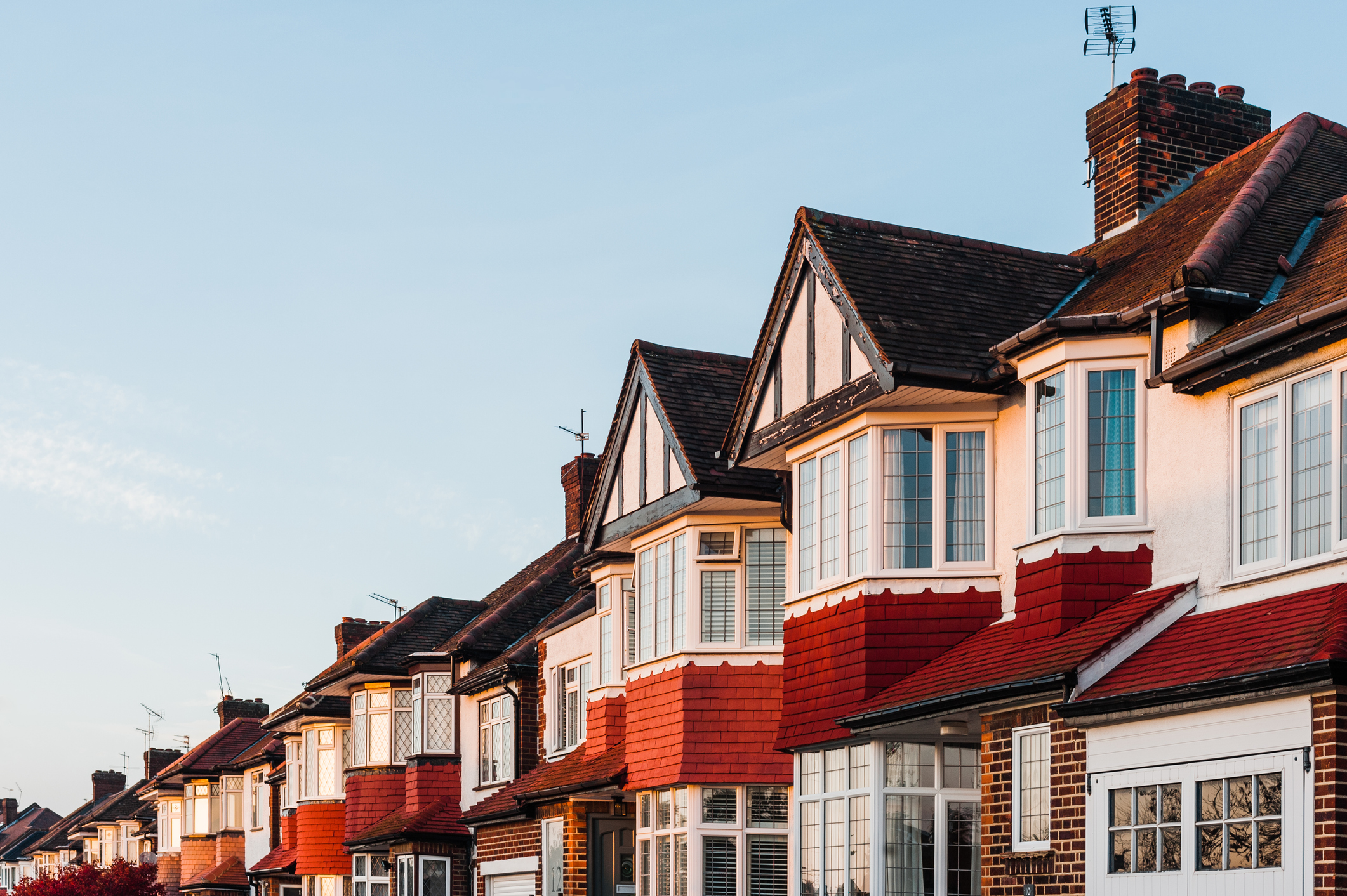What’s happening with UK house prices? Latest property market moves and forecasts
House price growth slumped in the build-up to the Autumn Budget and forecasts suggest it may slow further following the latest fiscal update. Where are prices heading beyond 2025?

Sam Walker

The housing market is emerging from an uncertain period, when buyers and sellers geared up for any consequential Budget announcements and many homebuyers and sellers may now be boosted by interest rate cuts.
It comes as the housing market had been braced for bad news in chancellor Rachel Reeves’s Autumn Budget in November amid speculation of a new property tax on homes valued at more than £500,000.
This didn’t materialise and the only major housing change was plans for a new ‘mansion tax’ from April 2028.
MoneyWeek
Subscribe to MoneyWeek today and get your first six magazine issues absolutely FREE

Sign up to Money Morning
Don't miss the latest investment and personal finances news, market analysis, plus money-saving tips with our free twice-daily newsletter
Don't miss the latest investment and personal finances news, market analysis, plus money-saving tips with our free twice-daily newsletter
House price indices (HPI) have shown that Budget speculation caused a slowdown in growth and more recent data in the aftermath from the Royal Institution of Chartered Surveyors (RICS) suggests the market’s prospects remain unclear.
The latest RICS UK Residential Market Survey, compiled both before and after the Budget last month, revealed the weakest reading for buyer demand since late 2023.
This has been blamed on Budget uncertainty, a lack of housing market support and high borrowing costs.
Meanwhile, recent annual reviews of the housing market from lenders Halifax and Nationwide suggest there was a ‘subdued’ atmosphere in 2025.
Halifax said property price growth was ‘limited’, with prices rising by just 0.7% between November 2024 and November 2025. It said the average UK property price is £299,892.
Nationwide Building Society said annual price growth slowed from 4.7% at the end of 2024 to 2.1% in the middle of 2025 then 1.8% in November.
One major announcement from Rachel Reeves in the Budget was that the rate of tax on property income for basic rate taxpayers will rise from 20% to 22% from April 2027. For higher rate taxpayers, it will increase from 40% to 42%, and from 45% to 47% for additional-rate taxpayers.
However, this will only affect landlords as the tax is paid on income made from renting out properties.
New forecasts from the Office for Budget Responsibility (OBR) suggest this could have an impact on the property market and house price growth.
The OBR said it expects the increase to property income tax rates from April 2027 to reduce house price growth by around 0.1 percentage points a year from 2028.
The average house price in the UK is expected to rise from £260,000 in 2024, to just under £305,000 in 2030, according to the OBR.
However, with the Budget now announced and interest rates cut in December - with hopes for more on the horizon - house prices could be set for a more positive 2026.
What do official house price figures show?
There are at least five different indices that measure how much UK house prices have gone up or down over the past month and year, but the most authoritative source is HM Land Registry.
The Land Registry has the most comprehensive data set, as it includes cash purchases as well as those financed through a mortgage, but the main drawback is that it is published with a six-week time lag. This means other sources can give a better snapshot of current conditions.
The latest official figures from the Office for National Statistics (ONS) show house prices in the UK fell by 0.1% between September and October, the latest month for which data is available.
The ONS records the average price of a UK house at around £269,862.
In contrast, Halifax and Nationwide’s house price indices report different average house prices as they can only use data from their own customers’ transactions and therefore report different figures.
Consumer confidence remains low
Housebuyers in the UK were at their least confident this financial year in the lead-up to the Budget, according to the latest data, as murmurings of tax hikes spooked buyers across the market.
On top of a weakening labour market and slow economic growth, the latest sentiment survey from the RICS revealed new buyer enquiries fell 32% in November, the weakest reading since November 2023, while agreed sales and new instructions are also negative.
This is particularly the case for the upper end of the property market. Data from Zoopla shows house prices in London and the South recorded their first fall in 18 months at the start of November, driven by Budget uncertainty and more homes for sale, boosting choice for home buyers.
UK-wide buyer demand dropped 12% annually, while sales agreed fell 4%.
There are hopes that a recovery could be on the way, now that Budget uncertainty has been removed.
Richard Donnell, executive director at Zoopla, said: “The Budget bark was worse than the Budget bite for the housing market. Home buyers and sellers will welcome the end of the uncertainty that has stalled housing market activity since the late summer. Our data shows the underlying demand to move home remains strong.
“With greater certainty we expect a rebound in housing market activity that builds into the new year with households who paused home moving decisions over recent months return with greater confidence.”
Where are house prices forecast to go in the short-term?
Asking prices are a useful barometer for market sentiment as it currently stands. These snapshots tend to be published only a few weeks after the data was recorded.
The latest data from Rightmove shows asking prices fell by 1.8% between November and December, from £364,833 to £358,138. The property portal said the monthly drop was larger than the 10-year average of 1.4%.
Average asking prices across England, Wales and Scotland end 2025 0.6% lower than December 2024 (-£2,059), Rightmove said.
Asking property price growth in regions like the West Midlands and Yorkshire and the Humber has been offset by falls in the south of England.
Rightmove’s figures show average asking prices fell 0.6% in 2025 and it is expecting prices to rise by 2% next year.
The drawback to Rightmove’s data is that asking prices don’t necessarily reflect the final sold price.
RICS members aren’t expecting house prices to grow over the next three months until borrowing costs come down but with interest rate cuts on the horizon, there are higher hopes over the next 12 month period.
Will house prices rise in 2026 and beyond?
Broadly speaking, experts predict house prices to grow in 2026 and beyond.
Estate agency Hamptons expects that house prices will grow modestly in 2026, anticipating a rise of 2.5% by Q4 2026.
This growth is forecast to be driven mostly by a healthier market in the North of England and Midlands; the latter is expected to overtake London in price performance.
Better affordability in these two regions is a major factor for growth where fewer buyers are priced out of the market.
Wider economic factors play a part too – the estate agency is expecting three interest rate cuts by the Bank of England in 2026, lower inflation, and for wages to rise faster than prices. The combined factors could see affordability improve over the year.
However, a less optimistic near-term picture has been painted by real estate services firm Savills, which expects house price growth to be more sluggish, predicting prices to increase by just 2% in 2026.
There is a light at the end of the tunnel, though. Savills forecasts growth to pick up between 2027 and 2030, bringing total growth from 2025 to 2030 to 22.2%.
This growth is expected to be powered by strong performance in Yorkshire and The Humber and North East England, which are both forecast to grow 28.8% by 2030.
Savills is currently forecasting 4% growth in 2027, 6% in both 2028 and 2029, and 5.5% in 2030.
They agree with Hamptons that the outlook for affordability is one factor that will drive the speeding up of price growth. They expect wages to grow 22% between 2025 and 2029 and for the economy to strengthen closer to 2030, boosting buyer confidence.
Savills added that falling mortgage rates and more relaxed affordability tests from lenders could boost transaction volumes, making it easier for first-time buyers to get onto the housing ladder.
Zoopla also believes house price growth will be slow in 2026 at 1.5% as interest rate cuts slowly filter through to affordability.
Nationwide predicts that house prices will grow by up to 4% in 2026, driven by rising incomes and falling interest rates. The building society added property tax changes announced in the Budget are unlikely to have a major impact on the market.
Halifax thinks property prices will rise more in 2026 than 2025, forecasting an increase of up to 3%, as slowing wage growth and higher rates of unemployment are offset by falling interest rates and easing inflation which will increase buyers’ purchasing power.
Get the latest financial news, insights and expert analysis from our award-winning MoneyWeek team, to help you understand what really matters when it comes to your finances.
Daniel is a financial journalist at MoneyWeek, writing about personal finance, economics, property, politics, and investing.
He is passionate about translating political news and economic data into simple English, and explaining what it means for your wallet.
Daniel joined MoneyWeek in January 2025. He previously worked at The Economist in their Audience team and read history at Emmanuel College, Cambridge, specialising in the history of political thought.
In his free time, he likes reading, walking around Hampstead Heath, and cooking overambitious meals.
- Sam WalkerStaff Writer
-
 Boost for over 100,000 families on Child Benefit as new HMRC payment system rolled out
Boost for over 100,000 families on Child Benefit as new HMRC payment system rolled outThousands of households will no longer have to pay the dreaded High Income Child Benefit Charge through self-assessment
-
 Are you being haunted by the ghost of Christmas past? How festive cutbacks could boost your long-term wealth
Are you being haunted by the ghost of Christmas past? How festive cutbacks could boost your long-term wealthThe average family spends around £1,000 over the Christmas season. Here’s how much you could have gained if you had invested some of the money instead.
